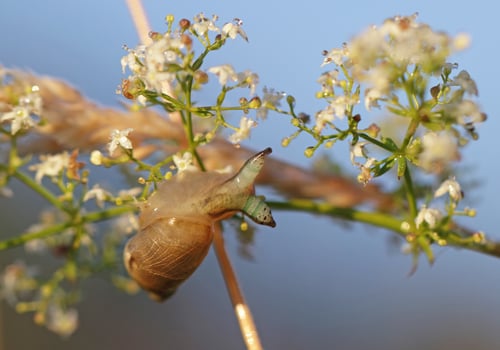The love for all things creepy and spooky is at an all time high around this time of year. We love to subject ourselves to the horrors of haunted houses and our favorite fright filled films, but do we always have to search in fiction for these thriller themes? As it turns out, nature provides once again. Parasitic organisms such as the “zombie fungus” show no mercy to their hosts.
The “zombie fungus” (Ophiocordyceps unilateralis) earns its gnarly sounding name with its unique methods of reproduction. The parasitic fungi starts its life as an airborne spore looking to land on an unsuspecting carpenter ant’s exoskeleton. It then gruesomely burrows itself into its host and begins to start its seemingly evil tactics. The fungi starts to take over the mind of the ant and leech its nutrients from within. The now zombie ant digs its teeth into a leaf and dies. In an alien-like scene, a fruiting body emerges from the dead ant’s body, ready for the wind to take the new spores away and start the cycle over again. Lucky for us, these fungi love the hot, humid ecosystems of many South American countries, not the high mountains of Colorado.

The Green-banded Broodsac (Leucochloridium paradoxum)
A bit closer to home is the green-banded broodsac (Leucochloridium paradoxum) which is a parasitic flatworm that infects amber snails of North America. The flatworm infests the snail by invading its eyestalks and using a strobing motion to mimic a juicy caterpillar in hopes that the snail is eaten by a bird above. Not only does the parasite produce this dancing illusion, but it also takes over the snail's brain and forces the snail into open spaces to increase opportunities for predation. The crafty worm also purges the snail of nutrients by absorbing them from within like an internal sponge. These dancing parasites then breed within the unknowing bird's intestines. Their eggs come out with the bird scat, more amber snails eat the poop, and the cycle continues.
This process is similar to that of the horsehair worm: one of the most feared parasites to crickets and grasshoppers. The worm lays its eggs in water, where it is ingested by drinking insects. As they grow and molt into larvae, the worms dig into the grasshopper’s tissue and absorb the host’s nutrients. The horsehair then takes over their hosts’ nervous systems and forces them to walk into a water source and drown. Its murderous scheme comes to an end, the worm reproduces, and dies along with its host.
While bugs make easy targets for parasites, they aren't the only creatures taken over by something sinister within. Another victim to the mind control powers of a slimy worm is the California killifish, who is one of the three hosts to the trematode Euhaplorchis californiensis. What makes this host-parasite relationship special is the worm encysts itself into the brain of the fish. By doing this, it changes the locomotive behavior of the killifish, which can cause it to jerk and shimmy at the surface of the water. Just like the green-banded broodsac, scientists believe this so that they will be consumed by a shorebird, which the parasite needs for its next life stage.
While these petrifying parasitic puppeteers truly terrorize bugs and fish alike, they have yet to find their human hosts outside of fiction. The zombie fungus, broodsac and the brain-impeding worms aren't the only terrifying freeloaders that live in the natural world. To learn more about other parasites, check out Sacculina barnacles or the fly-destroyer fungi.
Alice Dwyer is a naturalist at Walking Mountains. She steers clear of all things scary but can’t look away from those extra creepy crawlers.







